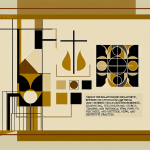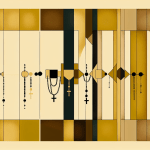Catholic Rites and Ceremonies: Exploring the Rich Tradition of the Catholic Faith
The Catholic faith, with its deep historical roots and rich traditions, is one of the oldest and largest religious institutions in the world. Central to Catholicism are its rites and ceremonies, which not only serve as expressions of faith but also foster a profound sense of community among believers. In this blog post, we will explore the various Catholic rites and ceremonies, their significance, and their role in the spiritual life of Catholics. Whether you are a practicing Catholic, someone interested in learning about the faith, or just curious about religious traditions, this overview will provide valuable insights.
Understanding Catholic Rites and Ceremonies
Catholic rites refer to the formal and ceremonial actions that are performed as part of worship and religious practice. These rites are steeped in symbolism and are designed to connect believers with the divine. They encompass a wide range of activities, from the celebration of the Mass to the sacraments, and serve different purposes within the community of faith.
The Mass: The Heart of Catholic Worship
The celebration of the Mass is perhaps the most significant rite in the Catholic Church. It is during Mass that Catholics believe they receive the Eucharist, which is the body and blood of Christ. This central act of worship is founded on the Last Supper and is celebrated in every Catholic parish around the world.
Elements of the Mass
The Mass comprises several key components:
-
Liturgy of the Word: This part includes readings from the Bible, including the Old Testament, the Psalms, and the New Testament. The homily, or sermon, follows the readings and provides an interpretation and application of the Scriptures.
-
Liturgy of the Eucharist: Here, the bread and wine are consecrated, transforming them into the body and blood of Christ. The faithful then partake in Communion, which is a fundamental aspect of Catholic belief.
-
Ritual Actions: Various rituals such as genuflecting, signing oneself with the cross, and kneeling are integral to the Mass, adding a layer of reverence to the celebration.
Sacraments: Channels of Grace
The Catholic Church recognizes seven sacraments, each serving as a significant rite that imparts grace to the believer. These sacraments are vital for spiritual growth and are key milestones in a Catholic’s spiritual journey.
The Seven Sacraments
-
Baptism: Often the first sacrament a person receives, Baptism marks the entry into the Christian community. It symbolizes the washing away of sin and the new life in Christ.
-
Confirmation: Following Baptism, Confirmation strengthens the grace received; it is a rite of passage that deepens a person’s commitment to the Church.
-
Eucharist: As mentioned earlier, the Eucharist forms a critical part of the Mass and is often referred to as the source and summit of Christian life.
-
Penance (Confession): This sacrament of reconciliation allows Catholics to confess their sins and receive absolution, fostering spiritual healing and renewal.
-
Anointing of the Sick: This sacrament offers spiritual and sometimes physical healing to those who are seriously ill or suffering.
-
Holy Orders: This rite ordains men to the priesthood, allowing them to serve the Church in a ministerial capacity.
-
Matrimony: The sacrament of marriage unites a man and woman in a covenant before God, symbolizing the union of Christ and the Church.
Liturgical Year: A Cycle of Seasons
The Catholic Church follows a liturgical calendar divided into seasons, each with its own themes and rites. This cyclical year guides the spiritual life of the faithful and reinforces the mysteries of faith.
The Major Seasons
-
Advent: This season marks the beginning of the liturgical year and is a time of preparation for the celebration of Christmas.
-
Christmas: Celebrated over several weeks, the Christmas season commemorates the birth of Jesus Christ.
-
Lent: A solemn season of penance lasting 40 days, Lent leads up to the celebration of Easter and prepares believers for the resurrection of Christ.
-
Easter: The most important season in the Catholic liturgical calendar, Easter celebrates the resurrection of Jesus. The Easter season lasts for 50 days and culminates in Pentecost.
-
Ordinary Time: The time between the significant seasons where the focus shifts to the teachings and miracles of Jesus.
Special Catholic Ceremonies
In addition to the sacraments and the Mass, various special ceremonies are celebrated throughout the year. These ceremonies often involve the whole community and serve to reinforce faith and fellowship.
Examples of Special Ceremonies
-
First Communion: A special rite for children, where they receive the Eucharist for the first time, often celebrated in a traditional service with family and friends.
-
Confirmation Ceremony: This rite typically takes place at a special Mass where candidates are anointed and confirmed by the bishop.
-
Weddings: Catholic wedding ceremonies are rich in symbolism, featuring readings, prayers, and the exchange of vows in the presence of God and the community.
-
Funeral Rites: The Catholic view of death is deeply spiritual, and funeral rites emphasize hope in eternal life through prayers, readings, and the burial service.
-
Feast Days: Each saint has a feast day where special Masses and celebrations honor their lives and contributions to the faith. These days are marked by various customs and observances.
The Role of Tradition in Catholic Rites
Tradition plays a crucial role in the Catholic Church. Many of the rites and ceremonies have been passed down through generations, fostering a connection to the early Church and its teachings. The rituals reflect the history, culture, and values of the Catholic community, emphasizing continuity and devotion.
The Importance of Community in Catholic Rites
Catholic rites and ceremonies are inherently communal. They bring together believers in a shared act of worship, creating bonds of fellowship and reinforcing the sense of belonging within the Church. Participating in these rites helps deepen faith and cultivates a supportive community among parishioners.
Conclusion
Catholic rites and ceremonies offer a profound glimpse into the belief systems and traditions of one of the world’s oldest religions. From the celebration of the Mass to the significance of the sacraments and the communal nature of ceremonies, these practices reflect the deep faith and dedication of Catholics worldwide. Understanding these traditions enriches one’s appreciation for the Catholic faith and highlights the importance of rituals in the spiritual journey.
If you’re looking to explore further into the Catholic faith or participate in these enriching rites, visiting a local parish or engaging with the community can provide an invaluable perspective. The embrace of tradition, community, and spiritual growth found in Catholic rites and ceremonies is truly a remarkable aspect of this vibrant faith.




